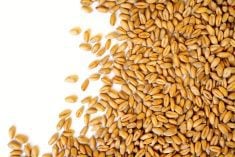WINNIPEG – As feedlots reduce their cattle numbers, the demand for feed grains has declined on the Canadian Prairies, said Market Place Commodities trader Allen Pirness from Lethbridge, Alta.
“It’s a pretty calm time of year. The feedlots are shipping a lot of fat cattle more than they are replacing. Their grain consumption drops off a little bit in February,” Pirness commented.
With nothing major happening that would get the feed grain market excited there has been little to influence wheat and barley prices either way, he said.
Read Also

Canadian trade data delayed by U.S. government shutdown
Canadian international trade data for September will be delayed indefinitely due to the ongoing partial shutdown of the United States government, Statistics Canada said Friday, Oct. 24.
Things are somewhat different when it comes to corn, as imports from the United States have become more expensive as the Canadian dollar has been declining, he added.
The Canadian dollar was recently above the 76 U.S. cent mark and has lost approximately two-thirds of cent so far this week. As of Thursday morning the loonie was at 75.27 U.S. cents. Concerns of a global economic slowdown have been the root cause of the declines on the stock markets, according to media reports. In turn, those worries have weakened the loonie’s value.
Nevertheless U.S. corn imports are expected to continue through the crop year, Pirness said.
“We’ll see what next year brings. It wouldn’t surprise me if we saw it continue into next year,” he said.
On the flip side, the weaker dollar is supportive of Canadian exports, Pirness added.














